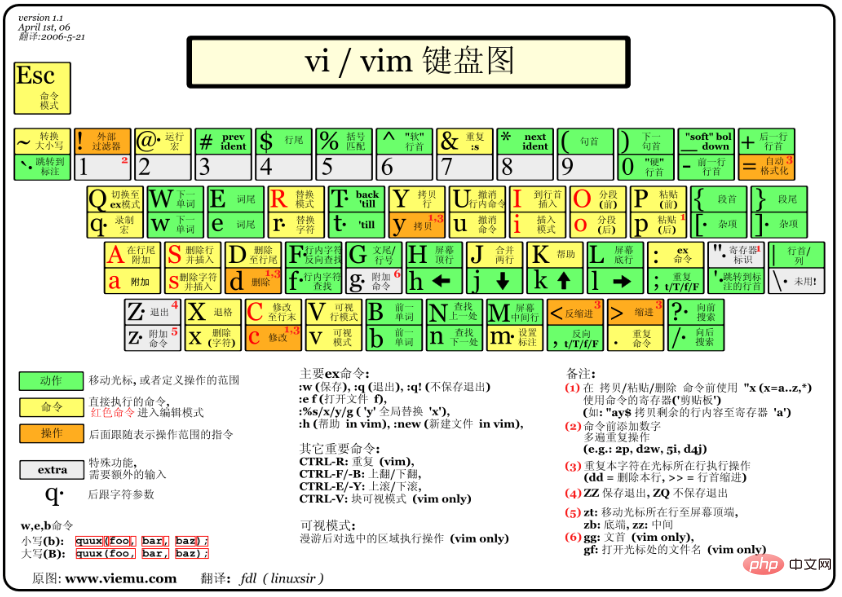
vim in Linux is a text editor developed from vi. This editor has convenient programming functions such as code completion, compilation and error jumping, and is widely used among programmers, while vi It's an old-fashioned text processor, but it's fully functional.

#Vim is a text editor developed from vi. It is particularly rich in functions that facilitate programming, such as code completion, compilation, and error jumping, and is widely used among programmers.
To put it simply, vi is an old-fashioned word processor, but its functions are already very complete, but there is still room for improvement. vim can be said to be a very useful tool for program developers.

The use of vi/vim
Basically vi/vim is divided into three modes, namely command mode (Command mode), input mode (Insert mode) and bottom line command mode (Last line mode). The functions of these three modes are:
Command mode:
The user has just started vi/vim and entered the command mode.
In this state, keystrokes will be recognized by Vim as commands instead of character input. For example, if we press i at this time, we will not enter a character. i is treated as a command.
The following are some commonly used commands:
i Switch to input mode to enter characters.
x Delete the character at the current cursor position.
: Switch to bottom line command mode to enter commands on the bottom line.
If you want to edit text: Start Vim, enter command mode, press i to switch to input mode.
The command mode only has some of the most basic commands, so you still have to rely on the bottom line command mode to enter more commands.
Input mode
Press i in command mode to enter input mode.
In the input mode, you can use the following keys:
character keys and Shift combination to enter the characters
ENTER, Enter key, line feed
BACK SPACE, backspace key, delete the character before the cursor
DEL, delete key, delete the character after the cursor Character
arrow keys, move the cursor in the text
HOME/END, move the cursor to the beginning/end of the line
Page Up/Page Down, page up/down
Insert, switch the cursor to input/replace mode, the cursor will become a vertical line/underline
ESC, exit input mode and switch to command mode
Bottom line command mode
In command mode Press: (English colon) to enter the bottom line command mode.
Bottom line command mode allows you to enter single or multiple character commands, and there are many available commands.
In the bottom line command mode, the basic commands are (the colon has been omitted):
q Exit the program
w Save the file
Press the ESC key to exit the bottom line command mode at any time.
Recommended tutorial: "Linux Operation and Maintenance"
The above is the detailed content of What does vim mean in Linux?. For more information, please follow other related articles on the PHP Chinese website!